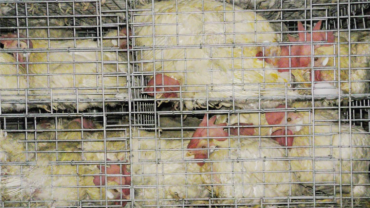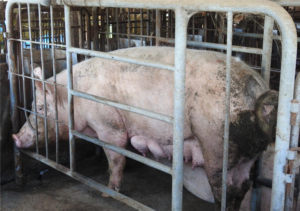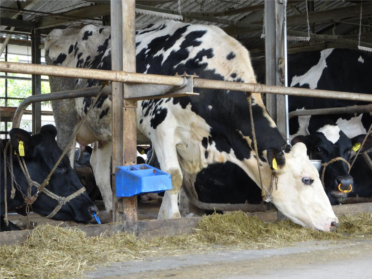The 2018 World Cup in Russia has recently ended. As part of preparations for hosting the World Cup, massive numbers of stray dogs were rumored killed in the 11 Russian host cities, and this violence was met with silence from the mainstream media and FIFA. Animal rights organizations fought a losing fight against this meaningless slaughter.
Now is the time to take action in preparation for the 2020 Olympic Games, which will take place in Japan.
We were asked by Animal Rights Center Japan (ARCJ) to disseminate information and promote their petition to stop cruelty at the Tokyo Olympics and Paralympics. Below we provide an extract from “Tokyo Animal Cruelty – the aim to preserve Standards of Animal Welfare at the Tokyo Olympics” released by ARCJ.
Sign the petition launched by ARCJ now!
Thanks to the London 2012 Olympic Games aiming for sustainability, it has become regarded as important to integrate animal welfare into the Olympics and Paralympics. In one example, the London 2012 Olympics pledged to use only cage-free eggs in all of their catering. The 2016 Rio Olympics also incorporated animal welfare.
While the London and Rio Olympics showed consideration for the welfare of animals, the Tokyo Olympics appear to be a very different story. In their desire to produce meat, eggs, and milk to be consumed at the upcoming games, the Tokyo Organizing Committee of the Olympic and Paralympic Games is seeking to greatly reduce the standards of treatment and husbandry of farmed animals.
This is possible mainly due to the low level of awareness of livestock farming conditions among the general public in Japan. Statistics gathered in other contexts show that attitudes greatly change when people learn about the reality of how farmed animals live, and we believe this would be the case with with people of Japan as well.
Content warning: the following sections contain descriptions of farmed animal conditions in Japan, including slaughter practices, which may be difficult to read.
Egg-laying hens in Japan
92% of egg-laying chicken farms in Japan use battery cages. More than 99% of eggs in Japan are from battery cage farms. The space per hen on these farms is only 444.7 square centimeters [about 1.2 square feet] on average, smaller than the chickens themselves. Being tightly packed, they squash other birds when they reposition themselves.
When the egg-laying rate of hens decreases, they are culled. These chickens are grabbed by their legs or wings, yanked out of their cage, and thrown into a container at a speed of six birds every ten seconds. These containers are stacked up and transported to a slaughterhouse by long-haul truck.
Chickens are of low priority at slaughterhouses. Even when they arrive at a slaughterhouse in the morning, they are often left out until the next morning, crammed in containers awaiting their slaughter. The birds in lower containers get covered in feces and broken eggs falling from the upper levels. Many poultry slaughterhouses in Japan do not use the stunning method. Birds are shackled upside down and their throats are cut while they are fully conscious.
Chickens have excellent cognitive capabilities. They are aware of what is going on while being hung up by their legs and unable to flee, and they struggle due to the pain of having their throats cut. It takes at least 90 seconds from when their throats are cut until death, during which they struggle and experience excruciating pain. Although a scalding procedure is supposed to be done after chickens have been killed, data shows that 136,798 egg-laying chickens were boiled alive in Japan in 2015 alone.
Broiler chickens in Japan
Compared with the rearing density of broiler chickens in European Union (EU) countries, the rearing density in Japan is 1.4 times higher on average, and up to 1.78 times higher. In Japan, 16 to 22 chickens with an average weight of 2.94 kilograms [about 6.5 pounds] are crammed into a space of one square meter [about 10.8 square feet]. While chickens are left out packed in containers at night, wild animals often attack them by biting off the birds’ legs and heads through small openings in the cages. The chickens that are attacked are found dead or dying the next morning.
Pigs in Japan
88.6% of pig farms in Japan use the gestation crate confinement method, which has been largely abandoned worldwide due to its cruelty. The percentage of these kind of farms in Japan is still increasing, and hundreds of millions of yen are allotted annually as public subsidies for facilities to transition to gestation crates. Although there are farms that raise pigs in groups, if only temporarily, 60.7% of farms set no period for pigs to be raised in groups. Pigs on these farms are never able to interact with other pigs, except when they are piglets, and are kept alone in confinement. There is no sign that the number of farms using the gestation crate confinement method will decrease in Japan. Since no meat processing companies have declared that they will eliminate gestation crates, consumers cannot choose gestation-crate-free pork in Japan.
94.6% of pig farms in Japan conduct castration on male pigs without anesthesia. It is commonly believed that pigs feel less pain if they are castrated when they are still small, which has no scientific ground. 19.8% of pig farms in Japan do not provide enough space for pigs to lie down. The number of farms with high breeding densities is growing. When pigs are transported to the slaughterhouse, it is common for handlers to abuse them with stun guns, to kick and punch them in their faces and other parts of the body, to walk on them, and so forth. 86.4% of pig slaughterhouses in Japan do not provide drinking water for pigs. In these cases, pigs cannot drink water for up to 27 hours after arriving at the slaughterhouse.
Cattle in Japan
72.9% of dairy farms in Japan restrain cows with short chains or rope on a constant basis, with no breaks. 72.5% of dairy farms never let cows exercise during their entire lives.
Marbled wagyu beef is considered the best beef in Japan. To produce marbled meat, the condition where fat and muscle intermingle, producers restrict cows’ vitamin A intake. Restricting vitamin A intake can cause gait abnormalities, weakening of eyesight, blindness, night blindness, arthritis, loss of appetite, and pregnancy complications. When transported to the slaughterhouse, it is common for handlers to abuse cows by pulling and twisting their tails, kicking them in the stomach, and so forth. 50.4% of cattle slaughterhouses in Japan do not provide drinking water, thus cows cannot drink water up to 24 hours after arriving at the slaughterhouse.
***
In the summer of 2016, the Ministry of Agriculture, Forestry, and Fisheries hurriedly created the JGAP (Japan Good Agricultural Practice) certification for use in the upcoming Tokyo Olympics. There are a few nods to animal welfare included in the certification requirements, but the standards of treatment and husbandry of the animals remain incredibly low.
Eggs produced by chickens in battery cages. Pork produced by pigs in gestation crates. Milk produced by cows who spend their entire lives in stalls so dark that the cows suffer from vitamin A deficiencies. While all of these are considered acceptable by JGAP standards, they are nowhere near the standards of producers in other countries when it comes to animal welfare.
The Ministry claims that their certification upholds the global standard set by the World Organization for Animal Health’s Terrestrial Animal Code, but the truth is that not only does the JGAP fall far short, it also makes no mention whatsoever of slaughter techniques. Therefore, cruel methods like killing chickens without stunning them first continue to be the norm in Japan. In the committee’s quest to create a sustainable Olympics, they are creating an Olympics in which more animals will suffer than ever before.
Activists for animal welfare in Japan are doing their best, but they need help. All nations must come together to help the animals of Japan. We must build an Olympics that humans can enjoy while showing compassion to non-human animals.
Please, help us to preserve standards of animal welfare at the Tokyo Olympic and Paralympic Games. Sign the petition here.
Feature image: the Tokyo skyline. Image credit Trevor Dobson, CC BY-SA 3.0.










1 Comment
https://m.youtube.com/watch?v=ZAkt492UPlA
This is disturbing! Leandro Aparecido Da Silva abuses horses. I have reported him to FEI, but more should be done…
I can’t believe this guy name and the world “Olympics” is in the same sentence?
https://www.fei.org/contact